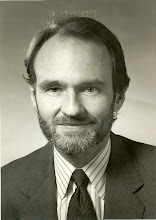In our Sep/23 sketch – Off to the Races, Maybe –we were to be “off to the races” given a Nov/6 rejection of what has been a failed experiment. That did not happen. Thus, in the largest sense we are to look for “surprising” weakness just ahead, especially in jobs creation. This is baked in the cake anyway; a potential tax on the top 2% simply aggravates the situation as most small businesses are S corps (passing the tax load to the owner).
Ever-changing rules and regulations and a smothering load of forms and restrictions will simply keep risk takers off the playing field.
And what is the translation, the reaction of corporate planners and consumers to this intrusion? We highlighted two GDP components on the Q3 advance release, Oct/26 – business investment was down 1.3% and consumer spending up only 2%. These prints were revised to -2.2% and +1.4%. This is a harbinger of things to come.
And Fed policy? It represents cheer leading at best, noise at worst. There will be little substantive impact on the economy as a whole. The Fed is a side show (except to street “watchers” who are paid to produce print).
We have an engine with the capacity to put us at 250 MPH+ in the quarter mile. The vehicle is fully fueled; there is ample liquidity. But there’s simply no one willing to drive the thing, given foggy conditions and the risk the track curves to the left just a few yards out.
From today’s Nov NFIB survey of small business we learned the optimism index plummeted. The NFIB board blamed this on the election (with Sandy playing a limited role). This is exactly the reaction we predicted, given an Obama victory. “Between…the promise of higher health care costs and the endless onslaught of new regulations, owners have found themselves in a state of pessimism,” noted NFIB economist Bill Dunkelberg.
To distill: most observers have yet come to grips with the reality of business fright tied to 4 more years; most observers have yet come to grips with the reality of “consumer wilt” tied to contagion from this event – job losses for example. Job losses are not just burger flippers. We know from the ISM Nov Manuf survey that manuf employment in Nov declined for the first time in 38 months.
The E-Z and the “fiscal cliff” are but decoys (we hope we go off the “cliff,” but that discussion is not the stuff for this blog). No matter what happens to the world economy; no matter what happens in Washington, the key determinant of success in setting strategy, that application at the margin, is the understanding that what could have been a US renaissance, will have to wait.
Robert Craven
Ever-changing rules and regulations and a smothering load of forms and restrictions will simply keep risk takers off the playing field.
And what is the translation, the reaction of corporate planners and consumers to this intrusion? We highlighted two GDP components on the Q3 advance release, Oct/26 – business investment was down 1.3% and consumer spending up only 2%. These prints were revised to -2.2% and +1.4%. This is a harbinger of things to come.
And Fed policy? It represents cheer leading at best, noise at worst. There will be little substantive impact on the economy as a whole. The Fed is a side show (except to street “watchers” who are paid to produce print).
We have an engine with the capacity to put us at 250 MPH+ in the quarter mile. The vehicle is fully fueled; there is ample liquidity. But there’s simply no one willing to drive the thing, given foggy conditions and the risk the track curves to the left just a few yards out.
From today’s Nov NFIB survey of small business we learned the optimism index plummeted. The NFIB board blamed this on the election (with Sandy playing a limited role). This is exactly the reaction we predicted, given an Obama victory. “Between…the promise of higher health care costs and the endless onslaught of new regulations, owners have found themselves in a state of pessimism,” noted NFIB economist Bill Dunkelberg.
To distill: most observers have yet come to grips with the reality of business fright tied to 4 more years; most observers have yet come to grips with the reality of “consumer wilt” tied to contagion from this event – job losses for example. Job losses are not just burger flippers. We know from the ISM Nov Manuf survey that manuf employment in Nov declined for the first time in 38 months.
The E-Z and the “fiscal cliff” are but decoys (we hope we go off the “cliff,” but that discussion is not the stuff for this blog). No matter what happens to the world economy; no matter what happens in Washington, the key determinant of success in setting strategy, that application at the margin, is the understanding that what could have been a US renaissance, will have to wait.
Robert Craven

No comments:
Post a Comment